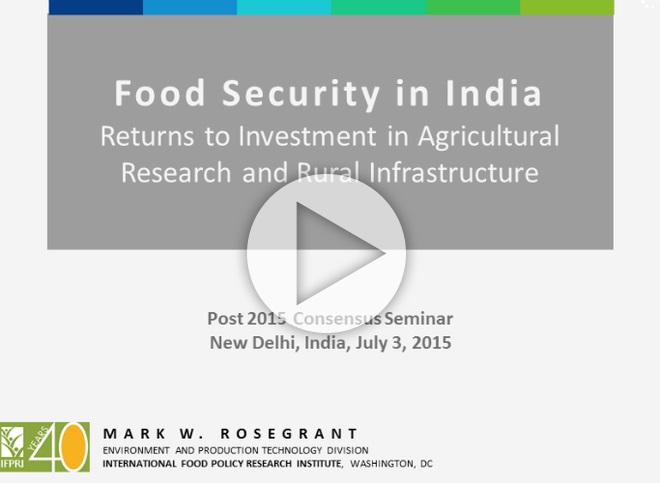India Perspective: Food Security
In 2013, the USDA estimates that there were 842 million people around the world suffering from food insecurity. Despite considerable progress in reducing poverty (a nearly 9% reduction was achieved between 2004 and 2010), 30% of these people live in India and about 190 million Indians remain undernourished. Food security remains a major problem for the country.
India is nearly self-sufficient in production of cereals, but a wider variety of foodstuffs is needed and there are real problems in terms of food distribution and storage. This is despite a number of efforts designed to improve storage and distribution systems, the regulatory framework and provision of subsidies, to make sure more food gets to the people who need it. There is also the 2014 National Food Security Act, aimed particularly at improving food distribution. However, increased agricultural productivity also has an important part to play in improving food security.
An important issue in India as elsewhere is the level of postharvest losses (PHL). In India, the best estimate is that 21% - one kilo of food out of every five harvested – is wasted. Most of this happens between the farm and the consumer, although there are also on-farm losses and a small amount of wastage by consumers. Consumer waste is a much smaller problem than in developed countries, though.
Reducing losses would benefit both the farmer, who would have more food to sell, and the consumer, who would pay lower prices and so have more to eat. More dramatic changes in the spread of new technologies could push prices down further so that farmers might actually lose out, but in realistic scenarios both groups would gain.
Reducing PHL can take considerable investment in infrastructure and storage facilities. For example, reducing losses by 5% would mean building 500,000 kilometres of paved road and increasing the amount of electricity available per head of population (although this would remain modest by emerging economy standards).
Looking at two scenarios for gradual reduction of losses, either concentrating on staple foods or cutting waste of both these and more perishable produce such as fruit, vegetables and animal products, an investment of up to about $100 billion could be needed for rural infrastructure, including paved roads, railways and electricity supply. But for every rupee invested, we can expect benefits to farmers and consumers worth at least three rupees, making PHL reduction a very worthwhile investment. It is also likely that better infrastructure would have wider benefits which are not accounted for in this study.
Another important contribution could be made by increasing agricultural productivity. Quite modest annual improvements in yield – 0.4% for crops and 0.2% for livestock products – would make a considerable difference, and could be achieved by spending just $10 billion more a year on agricultural research and development. The gains would be very large: at least R22 for every rupee invested.
But improved productivity is not the whole answer. The overall benefits for both farmers and consumers are greater if losses of food are reduced, so it is important to invest in both rural infrastructure and agricultural research to really improve food security for poor Indians.


